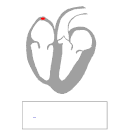Cardiac conduction system: Difference between revisions
CSV import |
CSV import |
||
| Line 34: | Line 34: | ||
[[Category:Cardiac anatomy]] | [[Category:Cardiac anatomy]] | ||
{{Cardiology-stub}} | {{Cardiology-stub}} | ||
<gallery> | |||
File:Cardiac_Conduction_System.jpg|Cardiac conduction system | |||
File:Basic_representation_of_cardiac_conduction.gif|Basic representation of cardiac conduction | |||
File:ConductionsystemoftheheartwithouttheHeart-en.svg|Conduction system of the heart without the heart | |||
File:Shapes_of_the_cardiac_action_potential_in_the_heart.svg|Shapes of the cardiac action potential in the heart | |||
File:ECG_Intervals.svg|ECG intervals | |||
File:ECG_Principle_fast.gif|ECG principle | |||
</gallery> | |||
Latest revision as of 11:12, 18 February 2025
Cardiac Conduction System
The Cardiac conduction system is a complex network of specialized cardiac muscle cells that initiate and coordinate the contraction of the heart muscle. This system ensures that the heart beats in a coordinated and effective manner, thereby facilitating efficient blood flow throughout the body.
Structure[edit]
The cardiac conduction system consists of several key components:
- The Sinoatrial node (SA node), often referred to as the heart's natural pacemaker, initiates each heartbeat and determines heart rate.
- The Atrioventricular node (AV node) slows the electrical signal before it enters the ventricles, allowing the atria to contract before the ventricles.
- The Bundle of His, a pathway that transmits the electrical signals from the AV node to the ventricles.
- The Purkinje fibers, which spread the electrical impulse throughout the ventricles, causing them to contract and pump blood.
Function[edit]
The cardiac conduction system controls the heart rate and rhythm. The SA node generates an electrical impulse that spreads through the atria, causing them to contract and pump blood into the ventricles. The electrical impulse then reaches the AV node, where it is delayed before being transmitted to the ventricles through the Bundle of His and Purkinje fibers. This delay allows the ventricles to fill with blood before they contract.
Clinical significance[edit]
Disorders of the cardiac conduction system can lead to arrhythmias, or irregular heart rhythms. These can range from harmless to life-threatening. Some common arrhythmias include atrial fibrillation, ventricular tachycardia, and heart block. Treatment options for arrhythmias include medication, cardiac ablation, and the implantation of a pacemaker or implantable cardioverter-defibrillator (ICD).
See also[edit]
References[edit]
<references group="" responsive="1"></references>

This article is a cardiovascular system stub. You can help WikiMD by expanding it!
-
Cardiac conduction system
-
Basic representation of cardiac conduction
-
Conduction system of the heart without the heart
-
Shapes of the cardiac action potential in the heart
-
ECG intervals
-
ECG principle





